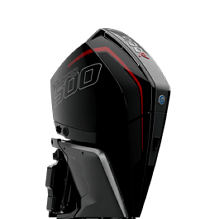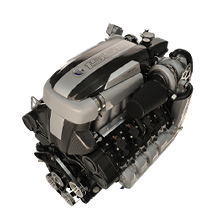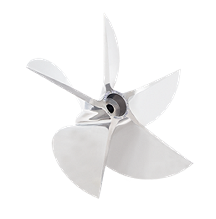Mercury Racing Blog
Prop School – Part 4: Blade Cup
Thu Jan 10 12:30:00 CST 2019


Originally, cupping was done to gain similar benefits as you get from progressive pitch or higher blade rake. In fact, cupping reduces full-throttle engine speed 150-300 RPM below the same pitch prop with no cup. The location of cup on the blade determines the affect it has on performance. When the cupped area intersects pitch lines, pitch increases. Cupping in this area will reduce engine RPM. Cupping can also prevent prop cavitation or blow out. Blade rake can be increased when the cup intersects the rake lines. Slip is a measurement of propeller efficiency as it turns through the water, the normal range is 10-15%. Most racing and performance boats slip can be as low as 5-7% where as performance vee and step vee bottom boats with high X dimension (outboard engines or sterndrives mounted high) can see slip as high as 20-22% at WOT
Cleaver Cup.

Adjusting cup on cleaver-style propellers is more difficult. The trailing edge is very thick and runs straight out on the rake line. Pitch can be altered some by grinding away some of the cup. Rake may also be altered slightly. The rake can be reduced by decreasing the cup near the tip of the blade. Rake can be increased by reducing the cup near the prop hub. Remember that any change in cup affects engine RPM. The Bravo I propeller family is a good example of how cup changes RPM and the attitude of the boat I will discuss blade configurations and factors that effect propeller efficiency in Prop School – Part 5.


